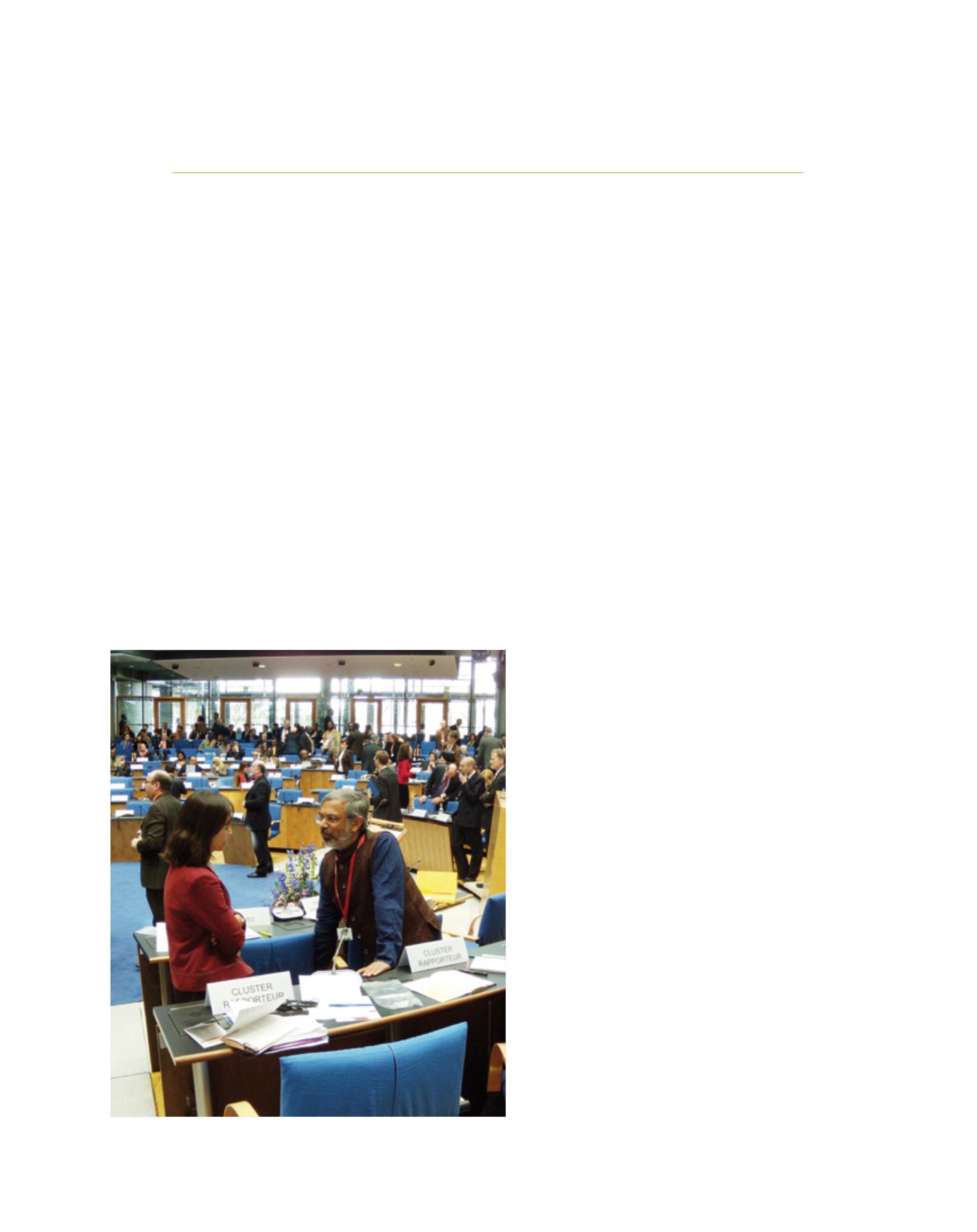

[
] 92
Structural solutions for ESD in Sweden
Carl Lindberg, Special Advisor to the Swedish National Commission for UNESCO on ESD
I
n Sweden, the concept of education for sustainable develop-
ment (ESD) was first established in 2000. In March of that
year, education ministers from the Baltic Rim countries met
in Stockholm at the invitation of the Swedish government. This
meeting came to be part of the Baltic 21 process, which had been
launched four years earlier with the aim of creating an Agenda
21 programme for the Baltic Sea and the region surrounding it.
The Baltic, an inland sea, had become severely polluted. Powerful
long-term measures were considered essential if it was to be
restored. Seven reports from different sectors relevant to this
restoration effort had been prepared, urging among other things
that the educational systems in the countries concerned be made
aware of the problems and be encouraged to help solve them.
The March meeting in 2000, which took place at Haga Palace in
Stockholm, adopted the Haga Declaration.
The importance of education for environmental work had long been
emphasized in Sweden. Its role had been noted as early as 1967 in the
preparatory documents for the UN Conference on the
Human Environment held in Stockholm in 1972. The
action plan from that conference, therefore, contained
a section on the importance of environmental educa-
tion. The intentions of the Swedish government were
manifested more clearly in 1990 in one of the general
provisions of the Education Act, stating that: “each and
every person active in the school system shall promote
respect for… our common environment”. The national
curricula for compulsory and upper secondary schools,
adopted in 1994, placed emphasis on environmental
issues, but also referred explicitly to what is now called
the social dimension in sustainable development. In
these documents, however, the actual term ‘sustainable
development’ is only used in reference to the environ-
mental dimension.
Following the Rio conference, the concept of
sustainable development was spread afield through
the successful promotion of Agenda 21. Sweden’s high
level of environmental awareness, already evident at
the time of the 1972 conference in Stockholm, is often
attributed by international observers to the country’s
time-honoured right of common access. This 200-year-
old principle allows citizens to roam more or less freely
through the countryside, while showing due considera-
tion for the environment.
The education ministers who met in March 2000
decided to develop an action plan for the provision
of education and training on sustainable development
in the Baltic Sea region: Baltic 21 Education. Efforts
to this end were led jointly by Lithuania and Sweden.
Three working groups of committed participants devel-
oped an action plan that was subsequently adopted at
a new meeting of education ministers at Haga Palace
in January 2002. The process of developing this action
plan helped make ESD known among the various
countries’ education ministries and non-governmental
organizations (NGOs). The plan was circulated to all
compulsory and upper secondary schools in Sweden
and to all Swedish higher education institutions.
Unfortunately, it was not followed up by information
efforts of any great note. It did, however, help ensure
that university researchers concerned with environmen-
tal training in international networks redirected their
work towards ESD. This applied both to those involved
in largely Nordic networks and those who had arrived
via the Organisation for Economic Cooperation and
Development’s environment and school initiatives.
The Bonn Conference on ESD, 2009
Image: Anna Lundh and Swedish National Commission for UNESCO
















